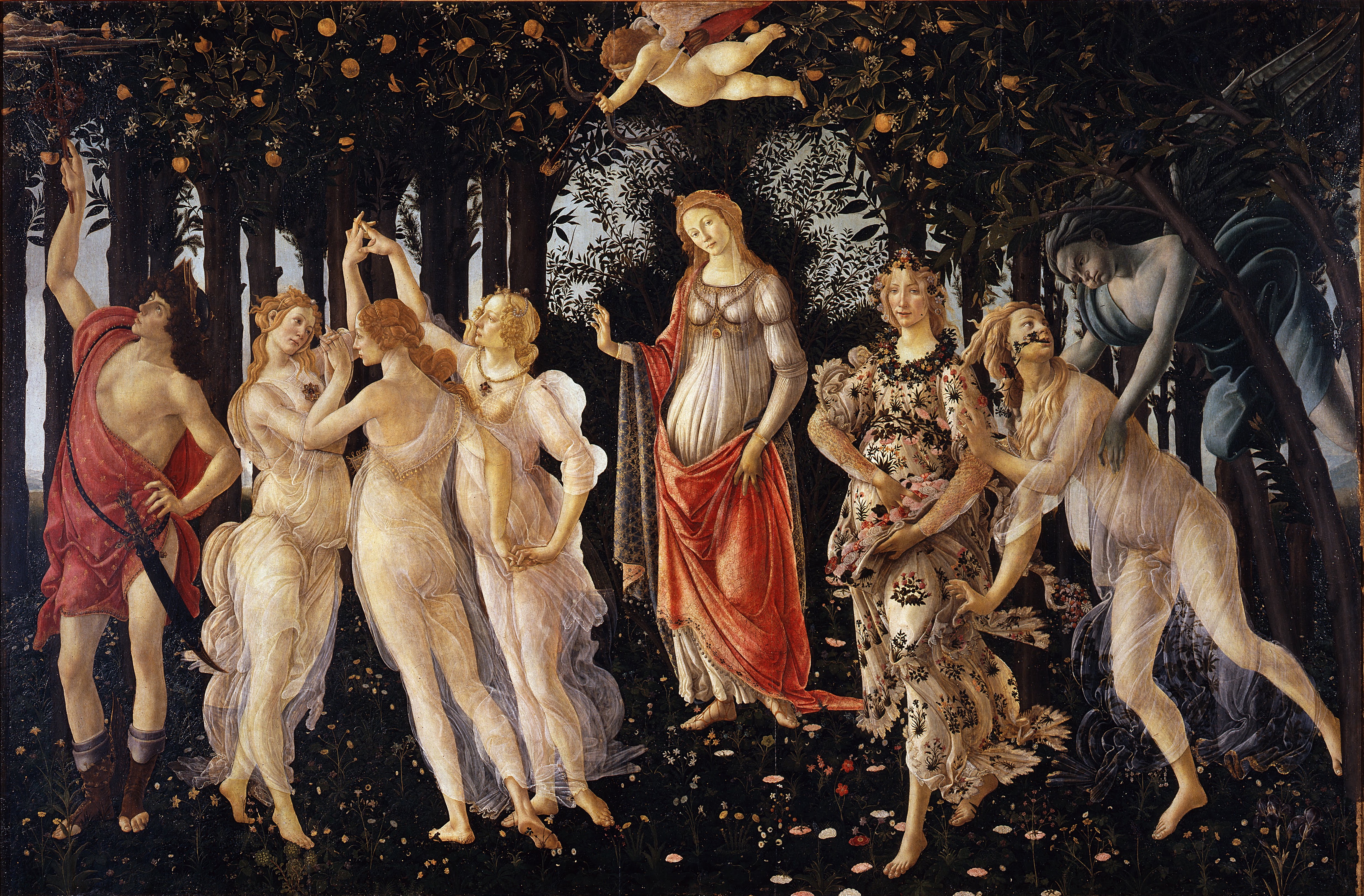Sandro Botticelli, Primavera
Table of Contents:

Sandro Botticelli
Primavera (1482-83)
The scene takes place in a semicircular meadow, theoretically the garden of Venus, with various plants and trees emerging from the grass. Venus appears in the center wearing a white headdress and translucent veil. She nods her head and gestures toward the viewer, while Cupid shoots an arrow from above.
Wind god Zephyr appears at the right and seizes the nymph Chloris, who transforms into Flora - nymph of Springtime - through the tendrils that extend from her mouth and metamorphosize into the floral garment next to her. The tall, slender, golden-haired Graces to the left of Venus exude an elegance that was admired in quattrocento Florence. They dance gracefully in diaphanous robes that move with the summer wind. At the very left of the composition, Mercury, often associated with Venus in ancient mythology, faces away from the scene and reaches toward the sky with a caduceus to stir the rain clouds of Autumn.
Although we don’t know the original setting or patron for the work, we know that Botticelli has employed Neoplatonic themes from the Ovidian myth of metamorphosis that would have been discussed at the Medici court. The scene should be interpreted as a Neoplatonic allegory regarding the changing of seasons and people, with the virtue of Venus at the center.
Bibliography
Legouix, Susan. Botticelli. London: Chaucer Press, 2004. Pg. 115.
Lightbown, Ronald. Sandro Botticelli: Life and Work (vol. 1). Berkeley: University of California Press, 1978. Pg. 73-81.